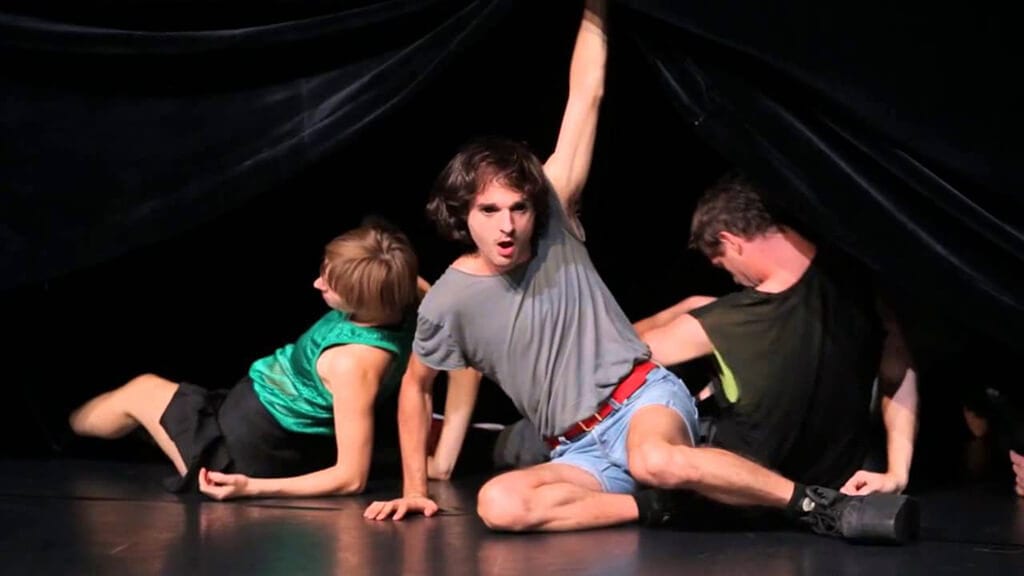Jefta van Dinther’s ‘As it Empties Out’ is more installation than dance piece, though it does have some very fine dance sequences in it. There are visuals of such extraordinary beauty that you want to frame them: seen below a quarter raised curtain, legs leaning; dancers lodged in windows, like prostitutes on speed, clicking and twisting to a beat that buzzes, hammers and is near to screaming, and of course, the last glorious image of a woman in a fur coat that she wraps around herself before it inevitably falls, only to be retrieved then lost again. Arms raised, she looks like a phoenix recanting the call to re-birth.
It all begins with a scrawny young man in t-shirt, shorts and black platform boots, who has the look of a French mime artist to him, repeating a single word. I think I’m in early Steve McQueen territory but the word stretches out to ‘give your self’ and then changes to ‘kill your self’ and then changes again to ‘bear your soul,’ and ‘a bare soul’ and so on. Layered over these words is a thick pulsing music; you are therefore never a hundred percent sure if you’ve just heard what you think you’ve heard. The young man raises the curtain and we half see dancers slithering on the floor: pain or pleasure? It’s difficult to know. And then they emerge. This first section, which contains the most dance context of the entire piece is, despite some wonderful feats of movement, the most disturbing –for, I think, the wrong reason. Given the experimental nature of this work, its intent to shock our senses, our fragile hold on reality, I’m disappointed that part of the tale we are here told is that of a love(lust?) triangle and another part depicts a woman as temptress. These arcs seem too everyday for a piece so lushly wild.
When the curtain rises on the section with the leaning legs we see that the dancers are pulling at something. The first, half hid/half-shown moment is beautiful, the rest is not; also, it is over-long. As Dinther repeatedly does this – holds a frame to the point where your interest has begun to wane- such practice can only be deliberate. He does it again when the dancers, in white, are locked into window frames. At first their movements are like those of a cuckoo, then as the light shifts to a psychedelic red, they spin with the lostness of a dervish. Dinther breaks the sequence not with a bang, but with a joke. We see what looks like a giant rabbit – at least to my eyes, but then maybe it’s a rabbit I’ve been waiting for. Perhaps other people see other things. The shape diminishes. The lighting throughout this piece is, it should be noted, superb. We see a woman in a fur coat. She lip synchs, sometimes perfectly and sometimes keeping her lips deliberately shut, to what sounds like an old Hollywood actor talking about how he tried not to see the people he played as evil. He talks too about acting, and the game of making films. Towards the end, he says: ‘You have to dig so deeply to find what makes that person tic’. If there is any irony intended, I suppose it is that Dinther is saying that not only don’t we know, but we can’t know.
I expected to be more disquieted by this piece than I was. Perhaps though, if someone tells you that their intent is to shock you, you mentally prepare and become shatter-proof. But then again, I didn’t expect such heralds of beauty.
While directors like Gene Kelly and Bob Fosse often directed like the dancers they were, with their gaze on bodies, Dinther appears to direct/choreograph less as a dancer and more as a visual artist. This piece’s search for beauty is an old artistic idea I very much like. I would have liked though, for Dinther’s exploration of the new to have been newer.

